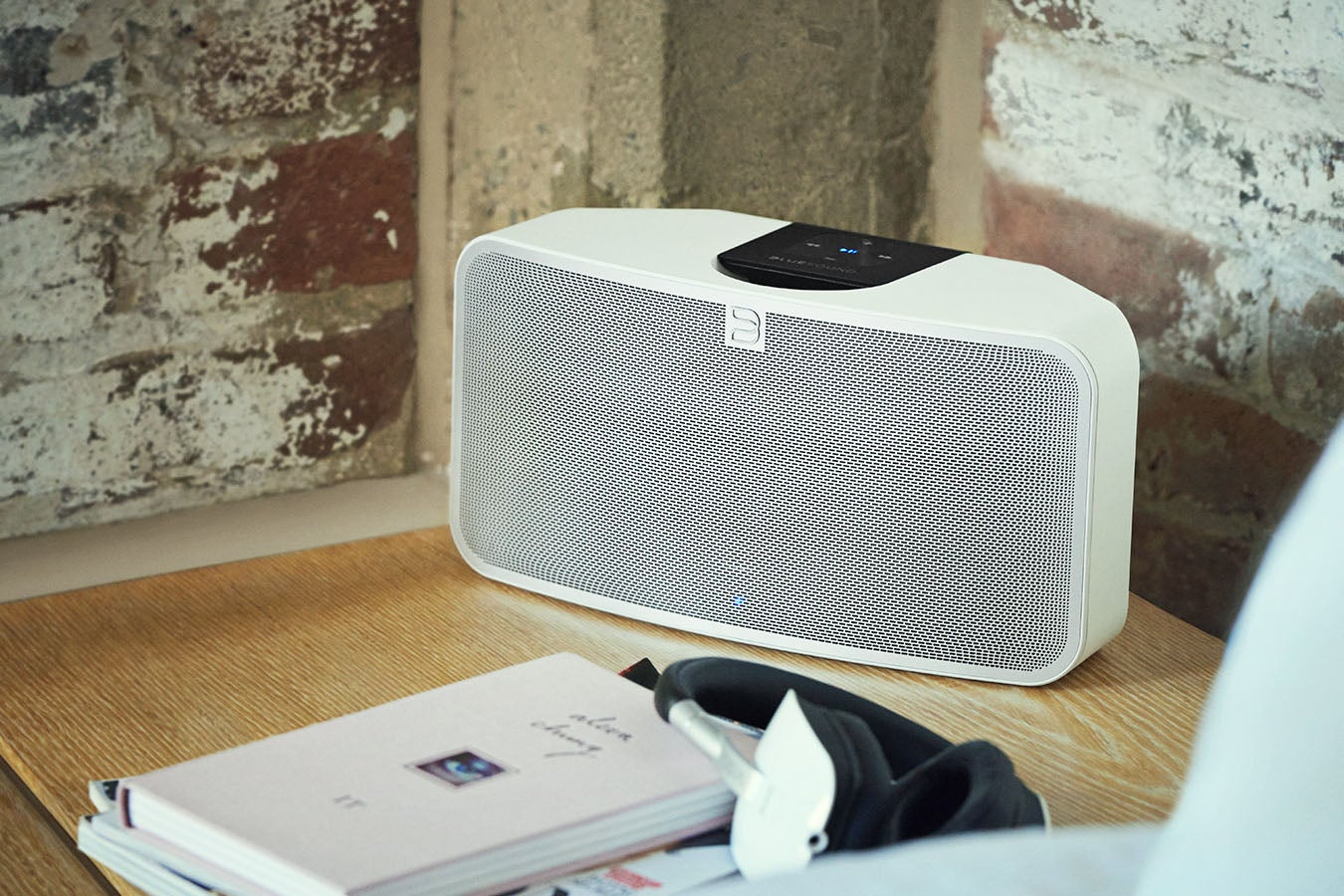Bluesound Pulse Mini Review
Bluesound Pulse Mini
Bluesound keeps its finger on the multiroom Pulse with this superb wireless speaker
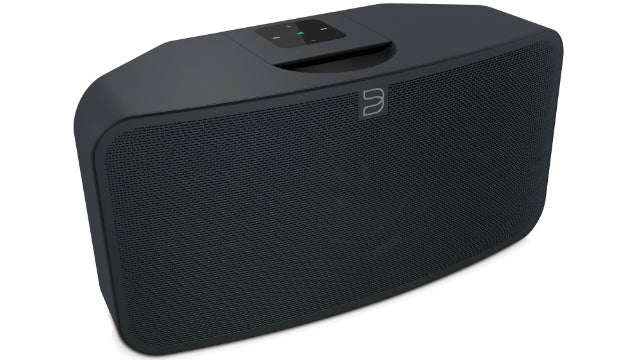
Verdict
Pros
- Outstanding build quality and design
- Muscular sound with plenty of top-end detail
- Excellent streaming services and hi-res support
Cons
- No DLNA/uPnP support
- Clunky network share setup
- Bass-heavy sound not for everyone
Key Specifications
- Review Price: £499.00
- 1GHz ARM Cortex A9 multi-core processor
- 60W DirectDigital amp and DAC platform
- 2-inch full-range drivers and 4-inch woofer
- BluOS multiroom controller app
- Spotify, Tidal, Napster, Qobuz, Deezer
- Hi-res MQA, FLAC, WAV, AIFF and ALAC playback up to 192kHz/24-bit
- NAS drive playback via network share
What is the Bluesound Pulse Mini?
The Pulse Mini is an all-in-one multiroom speaker that hails from the same range as the Bluesound Pulse 2, Bluesound Pulse Flex and Bluesound Pulse Soundbar. As the name suggests, it’s a more compact version of Bluesound’s Pulse wireless speaker, making it easier to place on tabletops and bookshelves while maintaining the powerful sound of its predecessor.
Bluesound was one of the first companies to offer hi-res audio streaming, which is now commonplace among all the big multiroom brands. But still unique to Bluesound is streaming support for MQA, the audio codec that packs hi-res music into smaller file sizes for streaming and downloading.
Related: Best Multiroom Speakers
Bluesound Pulse Mini – Design and connections
If weight is any indication of quality then the 3.6kg Pulse Mini should be a cracker. Chunky and robust, it’s heavier than most speakers of this size – thankfully, there’s a recessed carry handle on top when you need to lug it into a different room.
The Bluesound carries its weight well, with gorgeous styling and an eye-catching shape. The angled back-end and curved metallic grille is identical to the original Pulse, with a soft black or white matte finish adding a sense of luxury. A glass panel on top houses a cluster of touch-sensitive controls, which is a major fingerprint magnet but looks lovely. The buttons light up to denote the speaker’s status, mirrored on the front by a small LED so you can see it from afar.
Connectivity is as good as it gets for a wireless speaker. Alongside an Ethernet jack and USB port for memory sticks is a 3.5mm analogue/optical digital combi input, a 3.5mm headphones output and a USB-B port for servicing. Of course, most people will stick with the wireless connections, which include 802.11 b/g/n Wi-Fi and aptX Bluetooth 4.0.
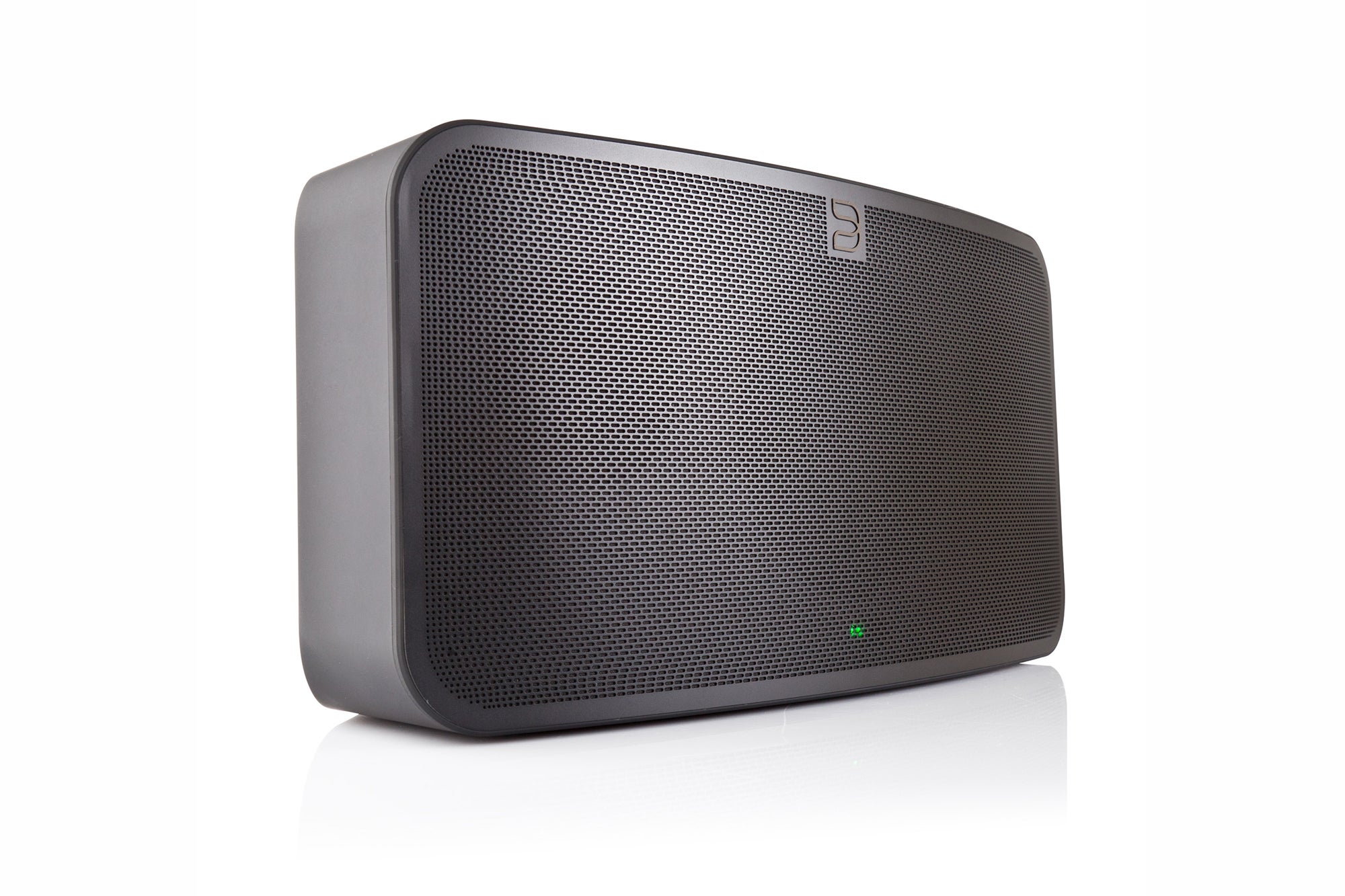
Bluesound Pulse Mini – Features
Inside the Pulse Mini’s engine room is a 1GHz ARM Cortex A9 multi-core processor, paired with Bluesound’s DirectDigital amp and DAC platforms. It musters 60W of digital amplification, pumped into the room by two 2-inch full-range drivers in their own acoustic chambers and a 4-inch woofer.
Bluesound’s multiroom platform is controlled by the BluOS controller app. It performs all the tricks you’d expect, such as sending different sources to individual speakers and groups, or playing the same music through them all.
BluOS boasts one of the best selections of streaming services around. You can access Spotify, Tidal, Napster, Qobuz, Deezer, KKBox, Groove Music, WiMP, HDTracks and Murfie, plus free internet radio from TuneIn, iHeartRadio, Calm and Radio Paradise.
Bluesound specialises in hi-res audio streaming. As well as MQA, the Pulse Mini will play FLAC, WAV, AIFF and ALAC up to 192kHz/24-bit, as well as low-res formats such as MP3, AAC and WMA. These can be played from NAS drives and PCs by setting up a network share – more on that later.
Add Bluesound’s £1099 Vault 2 to your network and you can rip CDs in high-resolution FLAC (or lossy MP3) to its 2TB hard drive and stream them to any Bluesound speaker in your system.
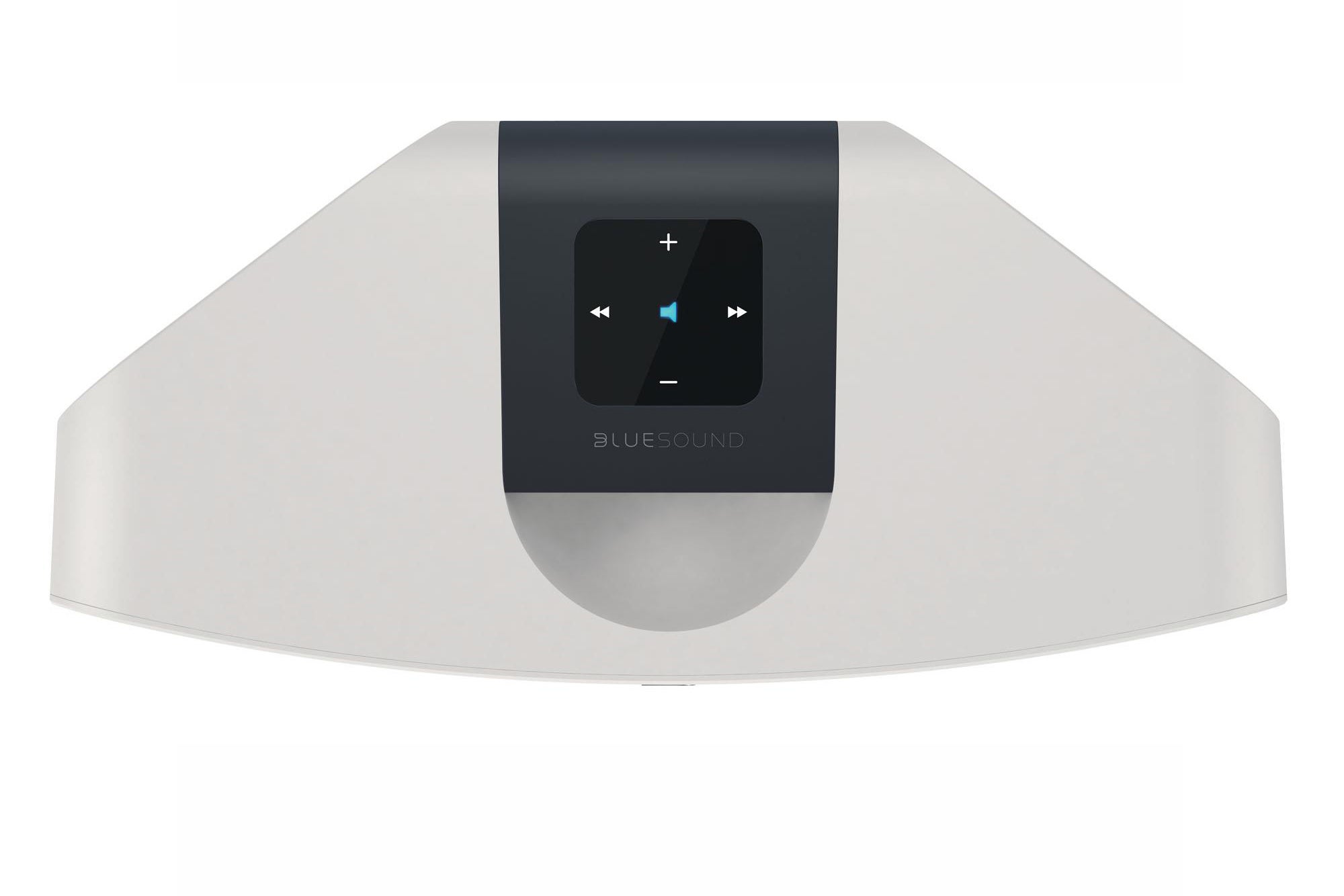
Bluesound Pulse Mini – Setup and operation
Like most wireless speakers, setup is carried out on a smartphone, but not through the BluOS app. You have to connect to the Pulse Mini via Wi-Fi then enter your router’s credentials in a browser-based setup page. It’s more convoluted than most multiroom apps but, too be fair, it didn’t cause any headaches.
The Pulse Mini doesn’t support DLNA or uPnP, so you have to set up a network share to play music from NAS drives and other libraries. Initially, you have to build an index for each library, which can take ages if you have a particularly big music collection. It’s a clunky, old-school process that’s a far cry from the hassle-free setup of other multiroom systems. You also have to re-index the library to include any new music added to your NAS drive.
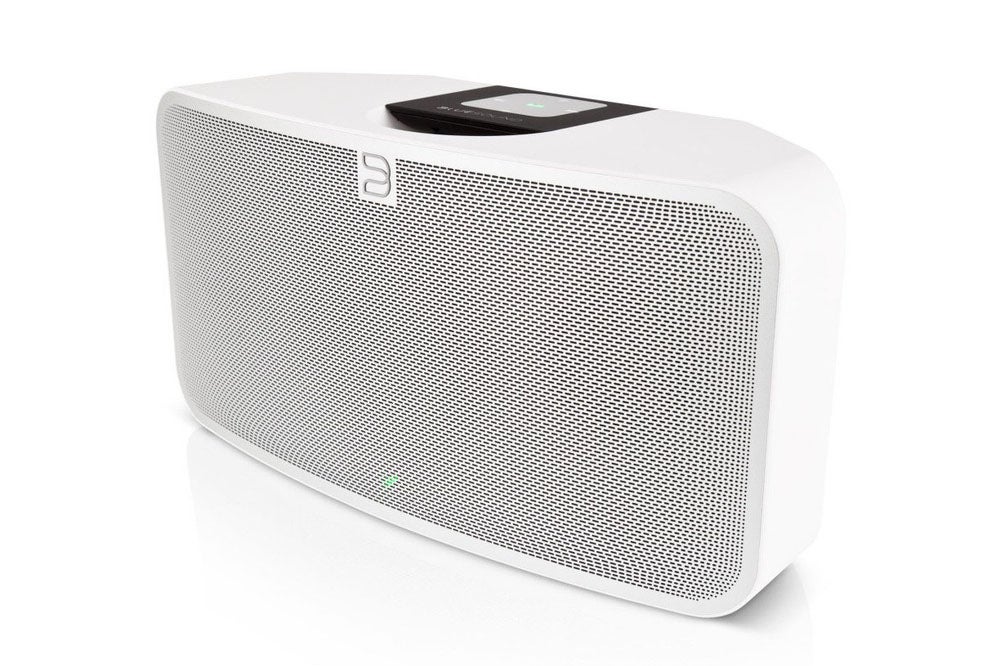
It’s a shame, because the app itself is otherwise superb. The design has a slick, professional quality and the multiroom functionality works flawlessly.
A well-organised sidebar menu is your jump-off point for finding servers, playlists and streaming services, while the My Players sidebar on the right lets you control your multiroom system. Clearly marked options such as ‘Add a Player’ and ‘Group All’ make the process self-explanatory.
Cover art looms large on the Now Playing screen, surrounded by strategically placed volume and playback controls. A separate menu – accessed by tapping the three dots on the right – lets you add the current track to your favourites or call up song information on Last.fm.
Bluesound Pulse Mini – Performance
Binge-listening to a diverse range of music through the Pulse Mini left me with warm, fuzzy feelings. This brilliant performer is blessed with bags of power, a smooth, detailed top-end and toe-tapping agility.
Its sound is deep and chunky, with bass very much at the forefront, but a strong balance of mid-range and crisp, twinkling treble stops it feeling stifled or muddy. Imaging is open and spacious, with clear, purposeful placement of instruments.
Play ‘Breezin’’ by George Benson and the nimble bassline chugs along in sync with Harvey Mason’s tight, punchy drumming. The Pulse Mini’s airy top-end allows percussion to cut through the mix, while Benson’s distinctive guitar solos are solid and detailed.
Switch to a bass-heavy, old-school hip-hop track like ‘Nuthin’ To Do’ by Common Sense and the filtered jazz bassline has depth and presence.
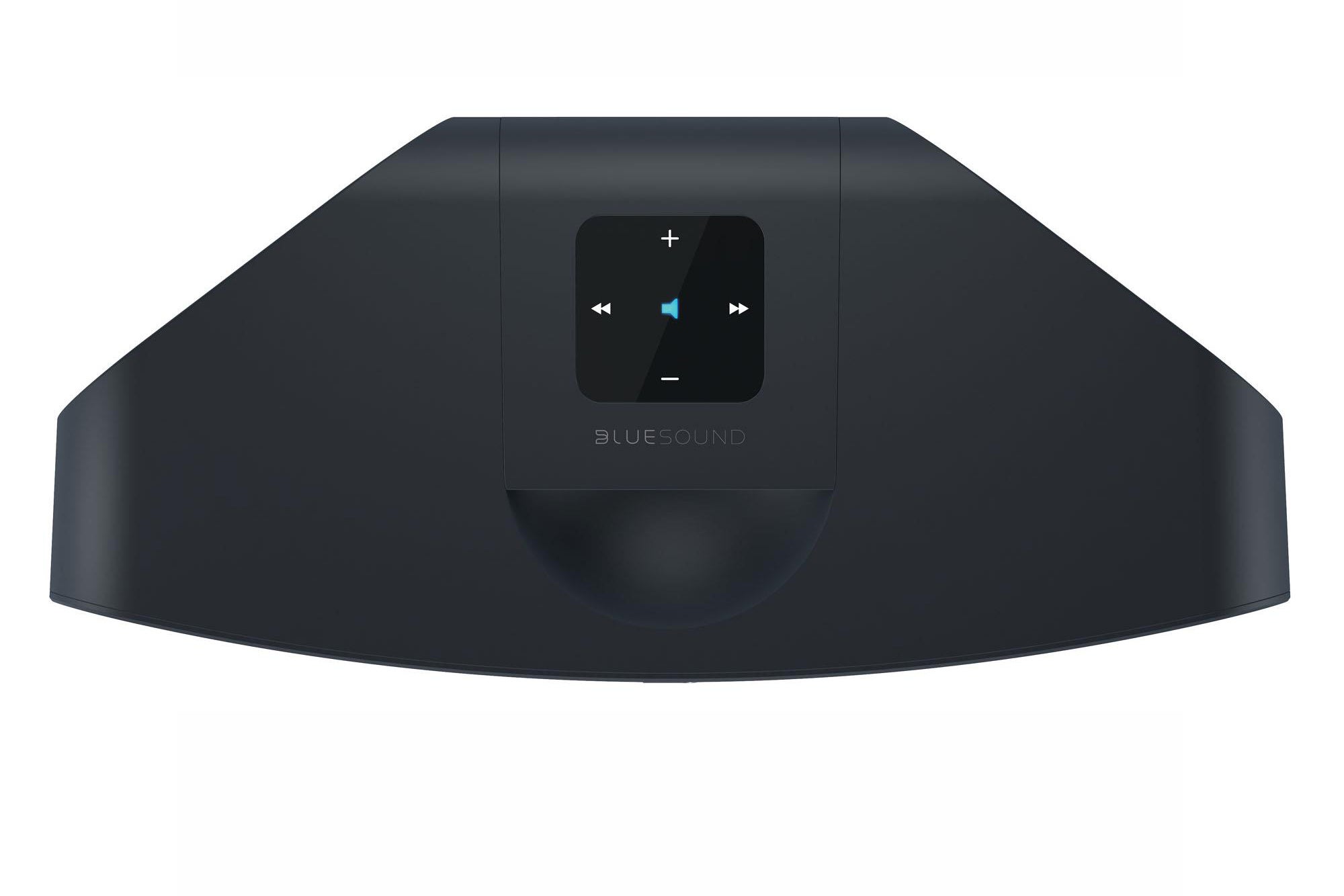
If it’s loudness you crave then the Bluesound won’t disappoint. It’s massively powerful and has the puff to fill a big room easily, despite its compact billing. It doesn’t have the same brawn and bass heft as the bigger Pulse 2, but there isn’t much in it.
Mid-range reproduction is excellent, with plenty of detail in vocals. Play ‘Ice’ by Sarah McLachlan and the Pulse Mini captures the nuance and emotion in her voice, while Gregory Porter’s mellifluous tones are rich and textured as he croons on ‘No Love Dying’.
The latter’s sax solos are rich and full-bodied, with the hard edges smoothed off. The fusion of piano and double-bass creates a warm and soothing backdrop that oozes refinement. It’s a lovely listen.
Things get even better when you step up to hi-res material. A 48kHz/24-bit MQA-encoded FLAC file of Steely Dan’s ‘Babylon Sisters’ sounds fabulous, with plenty of fine detail in the drums, brass lines and female harmonies in the chorus.
A 48/24 MQA of ‘Adventure of a Lifetime’ by Coldplay is an explosion of punchy drums, bold vocals and expressive guitar riffs – all underpinned by more of that weighty Bluesound bass.
The only negative that springs to mind is that fans of a leaner sound might find the Bluesound’s default emphasis on bass a little too much. If that’s the case, you can adjust the EQ settings for each speaker in the BluOS app, so it’s easy to find a balance to suit.
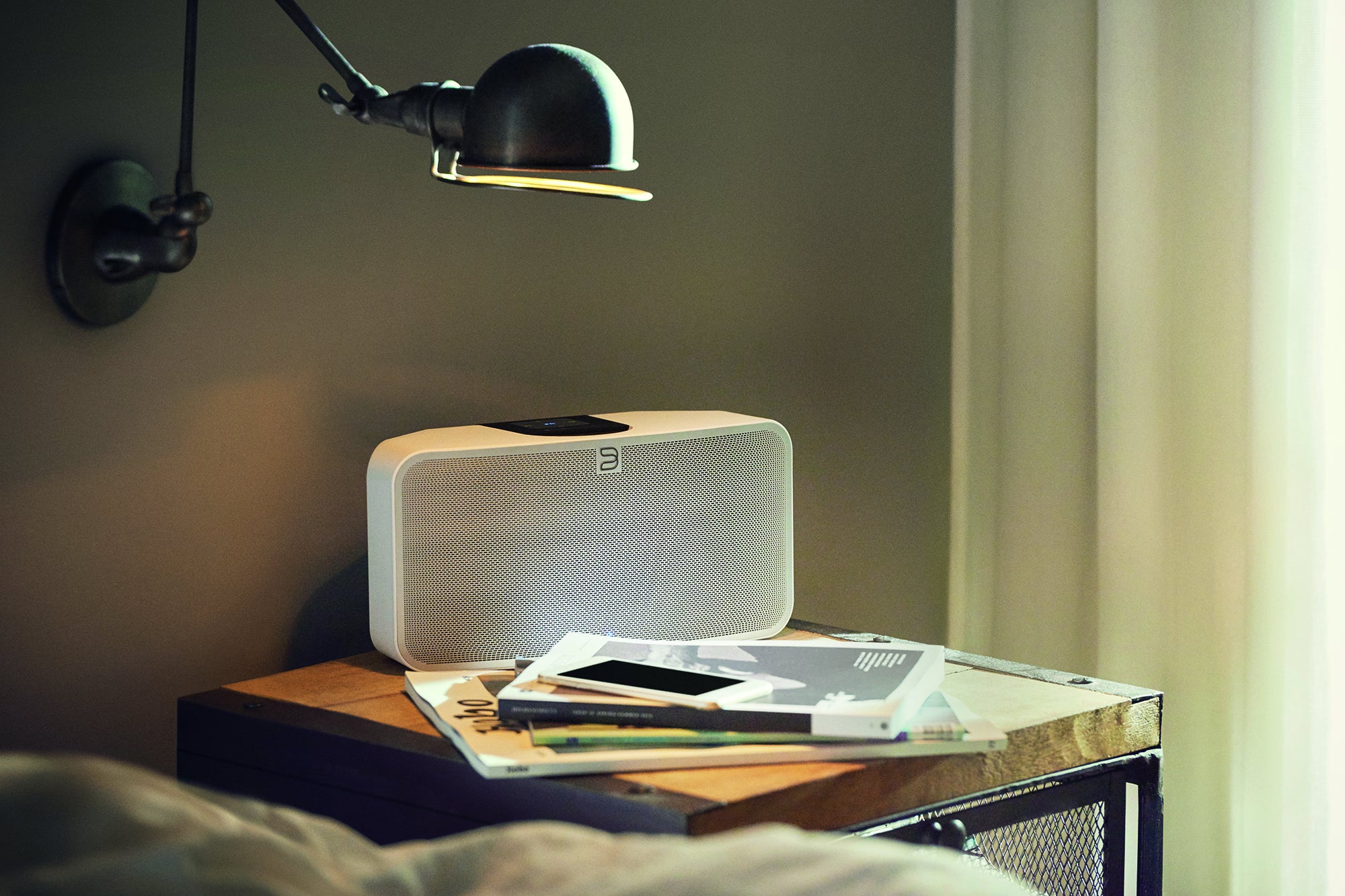
Should I buy the Bluesound Pulse Mini?
The Pulse Mini’s £499 price tag might seem like a lot of money, but its premium build quality, eye-catching design and powerful performance fully justify the expense. There’s a wealth of features, too, with support for all the main streaming services, comprehensive hi-res audio support and fast, powerful multiroom operation.
It’s a deeply impressive wireless speaker in so many ways, which makes the lack of DLNA/uPnP support all the more frustrating. The clunky, old-fashioned method of streaming music from NAS drives is a definite blot on the copybook, but doesn’t greatly diminish my admiration for this otherwise terrific multiroom speaker.
Verdict
A superb high-end wireless speaker offering muscular-yet-musical sound and premium design, let down only by clunky network sharing.

